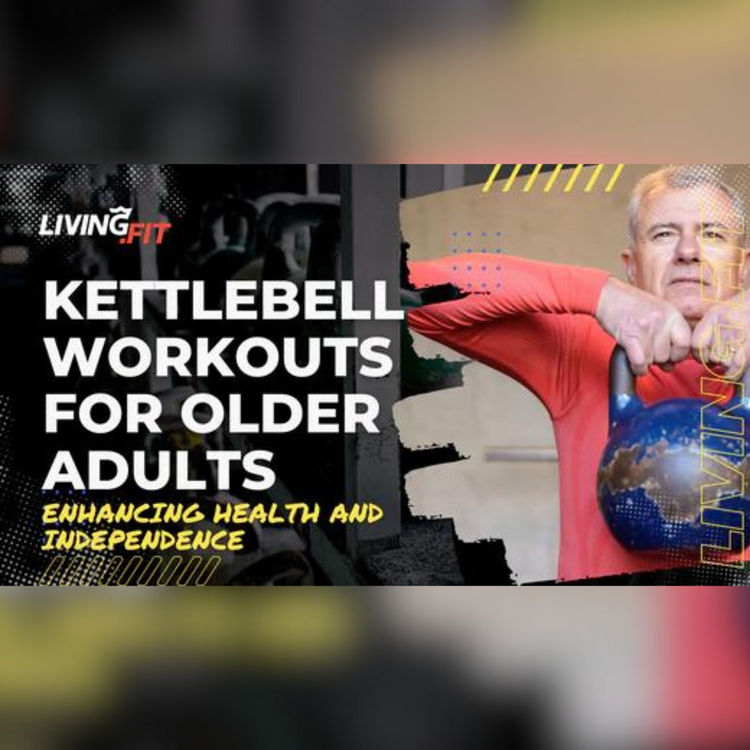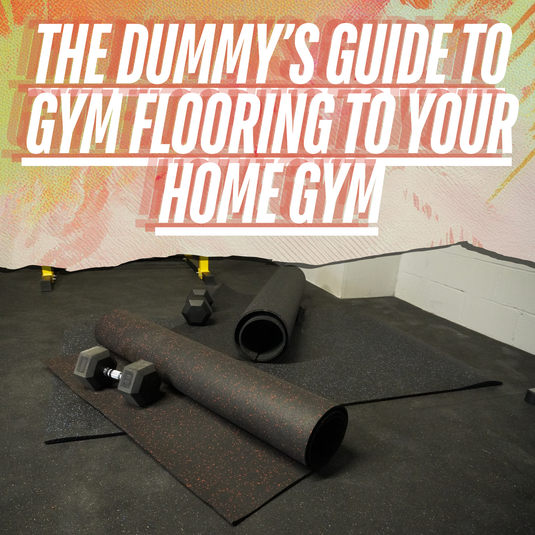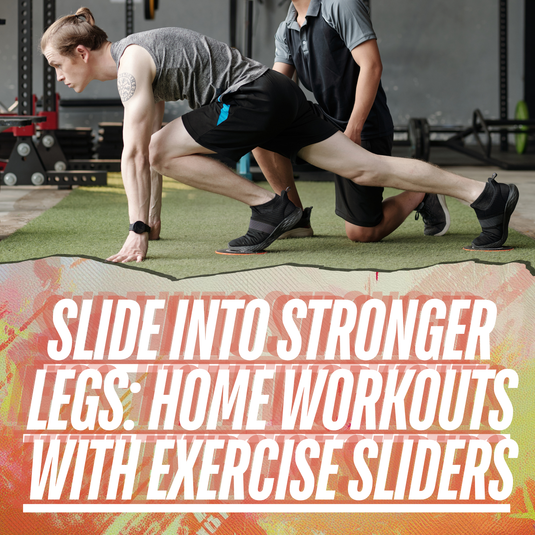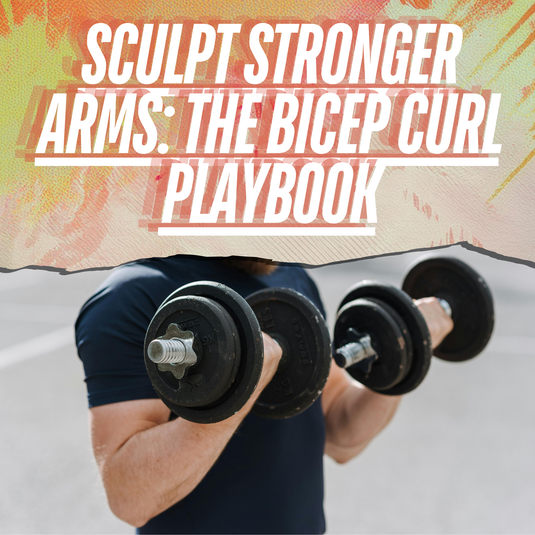Kettlebell Exercises for Seniors: Strength & Independence

⏱️ Estimated Read Time: 6 minutes
🧠 TL;DR
- Kettlebell Exercises for Seniors: Strength & Independence offers effective, accessible movements for targeted results.
- This guide is designed to help you move smarter, build strength, and stay consistent.
✍️ Summary
This post explores kettlebell exercises for seniors: strength & independence in a way that’s actionable and easy to follow. Whether you're new to this style of training or leveling up, it includes practical takeaways for your routine.
📚 Table of Contents
Kettlebell Exercises for Seniors and Older Adults: Enhancing Health and Independence
Kettlebells can provide significant opportunities to train all those physiological qualities in one modality. We will cover in detail the different qualities that kettlebells can work to improve during training and specific kettlebell exercises for seniors. This is not a comprehensive list as so many can be applied for different individual biology.
That brings us to the purpose of this article. If you stick around this long, you understand that a) Active Aging Population needs exercise just like any other population and b) As we age, a decrease in bone mineral density and lean muscle mass as well as decreasing in the rapid firing of musculature are challenges we face as we age. Incorporating a kettlebell workout for seniors can help address these challenges effectively.
For instance, our metabolism slows as we age, reducing lean muscle mass and bone density [1]. This decline begins to affect daily activities that, in our younger years, we continually take for granted. Reduction in bone mineral density (osteopenia) can make a basic trip and fall more catastrophic. Sarcopenia, the loss of muscle mass and strength, begins after age 30 with a reduction in cross-sectional area, density, and tendon extensibility [2]. These are typically attributed to changes in overall metabolism (as we age, it becomes harder to process and break down protein) and inactivity. In addition, there are changes to the firing rate of our muscle fibers and nervous system, with a significant loss of power at a faster rate than strength [2]. Power, or our ability to rapidly create force, is necessary for both daily physical activities and reacting to dynamic changes in position, also known as stability.
Exercise and the Active Aging Population
The active aging population, those 65 years and older, are being better and better educated on the benefits of exercise and their quality of life. The ability to live without restrictions to their day-to-day life, enjoy physical activities in their retirement and decrease their risk of catastrophic injury has become paramount drivers to get more of the population to try different exercise modalities. With any population, you must consider completing a proper assessment and considering the client’s injury history and goals.
The active gaining population may have greater needs regarding doctor clearance nutrition assistance than the general population; however, once those things are considered, training should reflect both the client’s goals and their biology. For some in the active aging population, this may be their first foray into exercise, so modalities such as suspension training and machines, may be the best first step in their training program. If you adhere to proper progression guidelines for clients, first establishing a strong stability base and establishing their training age, most if not all modalities become options for the personal trainer and fitness professional.
Utilizing Kettlebells with the Active Aging Population
That brings us to the purpose of this article, “Utilizing Kettlebells with the Active Aging Population.” If you stick around this long, you understand that a) Active Aging Population needs exercise just like any other population and b) As we age, a decrease in bone mineral density and lean muscle mass as well as decreasing in the rapid firing of musculature are challenges we face as we age.
Kettlebells can provide significant opportunities to train all those physiological qualities in one modality. We will cover in detail the different qualities that kettlebells can work to improve during training and specific exercises for each one. This is not a comprehensive list as so many different exercises can be applied for different individual biology.
We will focus on certain physiological aspects and the big six movement patterns (squat, hinge, lunge, push, pull, rotate).
Remember to apply these exercises only after taking your client through a thorough assessment and getting medical clearance.
Grip Strength/Core Stability With The Single Arm Farmers Carry
Often overlooked by most movement professionals, grip strength is essential to any client’s strength training. Grip strength positively correlates with shoulder health and peripheral arterial stiffness [3]. It was also found to be inversely associated with systolic blood pressure, meaning a stronger grip strength may lead to protection from hypertension. We can conclude that cardiovascular health and grip strength are connected.
So basically, being able to carry heavy things is an essential component of our overall health. Gray Cook, the father of all we know as functional movement, calls it his “#1 functional exercise.” Kettlebells and their anatomy of a handle with a dense ball attached lend themselves to be utilized to emphasize grip strength as an essential element to performing any movements with it. Traditionally, farmers’ carries are programmed with two loads, but what happens to the body when we only place it in one arm? Suddenly there is a stability-based stimulus on the body, requiring frontal plane stability of the hip and core, helping train an otherwise ignored movement plane.
Firing the hips and obliques in the frontal plane also makes our active aging clients more stable and “fall-proof.”
How to Perform:
-
Start with a “challenging” kettlebell load (using the RPE system or “Rate of Perceived of Exertion,” the load should feel like a 7-8 to begin with). Remember, all we are doing is picking it up and carrying it.
-
Have the client stand next to the load so it is either directly underneath them or outside your leg. The client should be standing in a hip-width position, ready to deadlift.
-
Initiate a hinge (maximum hip flexion) and pick up the kettlebell with one hand.
-
Once standing, the client can begin their normal gait pattern forward (or backward for an extra challenge).
-
The ideal cue for your client is to stand erect, shoulders retracted and depressed, and try to move slowly in a normal gait pattern, not allowing the kettlebell to pull them down toward it.
-
Complete for time or reps. Scale this exercise based on load, distance, or proximity to the midline (the further the hand is from the body, the greater the challenge).
Squat: The Suitcase Squat
The squat is an exercise that combines maximal knee flexion, maximal ankle flexion, and maximal hip flexion. This combination is readily seen in many day-to-day activities such as standing up from a seated position, being close to the ground, gardening, or lifting your kids up from the ground. This combination of joint actions and resulting muscle activation is an essential part of day-to-day life. After showing a client can demonstrate an unloaded squat first, the next logical progression is to have them squat with an external load.
While there are many ways to do this, the suitcase squat is one of the most beneficial to continue growing a client’s core activation and dynamic stability. This unilateral loaded variation places the load in the frontal plane (much like the single arm farmers carry above) and places emphasis on not only activating the musculature of the lower body (glutes, hamstrings, quads, etc.) but also stabilizing that load and trying to keep the body in balance while you execute the movement. In addition, we continue to work on grip strength and all the benefits associated with that. Additionally, with it being a closed-chain exercise, it works to increase bone mineral density.
How to Perform
-
Have a client start standing, feet shoulder-width apart, and toes turned slightly out.
-
Clients should have a kettlebell loaded in one arm, preferably picked up from the floor (see single arm carry for more), gripping the handle. The essential element of this is that it is loaded on one side.
-
Client then initiates a squat by flexing at the hip first, followed by knees and ankles into their deepest, safest squat depth. Depth on the squat is related to the mobility of the client.
-
Once at the bottom, the client returns to the top extending ankle, knee, then hip.
-
The client's goal is to stay upright with weight in the midfoot and heel, keeping feet flat throughout the movement.
-
The weight on one side may lead to a client slouching to one side or bending their elbow to compensate. The coach should know these things and cue them to keep their weight centered and arms straight.
-
Movement can be scaled with an increase or decrease load (based on goals), volume, or range of motion (utilizing a box or a bench for the bottom position for those who lack stability or have issues with a range of motion).
Hinge: Single Leg RDL (Romanian Deadlift)
We have already covered how essential balance and stability are for your active aging clients. That brings us to the king of stability-based hinge exercise, the Single Leg RDL. This top-down hinge requires dynamic stability in the lumbo-pelvic-hip complex and also, depending on the footwear, allows for stimulation of the dynamic stabilizers in the foot and ankle that lead to balance and breaking during ground contact. Anytime we pick something heavy up from the ground, reach to tie our shoes, or work to rapidly create any force from the body involves this pattern. Our kinetic chain relays information from the foot through the rest of the body and having a pointy, soft shoe may inhibit the stimulus that builds the critical parts of our dynamic stability. I strongly encourage you to complete this movement either barefoot or in barefoot shoes to get as much muscle engagement from the ground up.
How to Perform
-
Start with the client standing, a kettlebell in each arm, gripping the handles. The load should be lighter (RPE 5-6 for most as stability is the focus here).
-
Have the client place weight on one foot with the other foot hovering off the ground.
-
Clients should initiate a hinge by softening the knee of the weight-bearing leg and maximally flexing the hip. The client’s pelvis should be sitting parallel to the ground at the mid-range of motion, hovering foot in a straight line with the pelvis, and arms descending toward the ground at the same rate the pelvis moves.
-
Once at the bottom, the client rises back up by contracting the glute, extending the hip, and returning to the start position.
-
Some common faults in this movement are unintentional spine flexion at the lumbar spine and excessive external rotation of the grounded hip resulting in the pelvis not sitting parallel at the midpoint. A client should be cued to try to remain parallel with the floor during the movement with a hovering leg in tight isometric contraction. If the client cannot preserve parallel hips, movement can be regressed using a kickstand position with the non-weight-bearing leg or using an external object for balance.
Lunge: Reverse Lunge
Lunges are some of the most challenging lower body exercises you can do. With a greater eccentric component (lowering and lengthening) than any other traditional lower body exercise, they require much less load to be extremely effective. Most coaches revert to a forward lunge as their primary conception of the lunge pattern. I consider this lunge to be more challenging, requiring more deceleration and stability than most other versions of a lunge. It also requires greater knee stability and lengthening of knee extensors under greater tension.
For our active aging population, depending on their training age and experience, this can be problematic and lead to a higher-risk exercise with a lower reward. As with any exercise, we want to make sure we weigh the risk-reward ratio of any exercise. That leads us to the reverse lunge. The reverse lunge has a lot of the same components as the forward lunge except the locomotion is backward, a direction of force production we don’t see included very often in strength programming. This also emphasizes the greater expression of hip extension, the primary mechanism of the hip we use to create the most explosive and powerful force action.
The reverse lunge also allows for more diverse ways to scale for clients, from slowing down the motion or segment practice to allow for a safer exercise to increasing the speed and intention to build dynamic stability and hip extension.
How to Perform:
-
Client starts standing with a kettlebell in each hand, gripping the handles, feet hip distance apart.
-
Client steps back two shoulder widths into a wide gait pattern, feet remaining the same width.
-
Both knees are bent to an ideal 90 degrees of flexion, with the client’s weight remaining over the hips.
-
Ideal midpoint of motion has the client’s back knee right off the ground and both knees bent to 90 degrees.
-
Client then returns straight up to the starting position, returning the foot to the original position.
-
Movement can be scaled with load, tempo, range of motion, and volume. Depending on the placement, the client’s torso position can be changed to emphasize the knees or hips.
Helpful Resources:
Push: See-Saw Floor Press
Floor Presses are the same as the bench press action except for two main differences. First is a range of motion difference in the shoulder and scapula. Floor presses remove the risk of complications from shoulder horizontal abduction and scapula retraction that the bench press can present. Not every person’s shoulder can effectively load those ranges of motion. Hence, the floor press removes it and emphasizes safe horizontal abduction and adduction without greater requirements out of the shoulder.
Second, the floor press puts a client on the ground with full ground contact, allowing for greater muscle activation across the body. Ground exercises for clients, especially the active aging population, require a client to get up and down off the ground effectively. The more we can get clients to understand how their bodies move on the ground, the better activation across the whole body.
The see-saw floor press provides an additional stimulus. Alternating arm action provides a greater stimulus to the core musculature as well as allowing for greater volume that promotes more activity in what is considered an otherwise sedentary lifestyle for most of the active aging population. This movement also promotes shoulder stability through the entire glenohumeral joint.
How to Perform:
-
Client begins in the supine position, knees bent at 90 degrees, spine in a hollow position (low back in contact with the ground). Adjust knees as necessary to achieve a “neutral” spine position.
-
Client begins with a kettlebell in each arm in the front rack position. Load should be decided based on the client's goals or the training phase.
-
Client initiates the press fully extending one arm while leaving the other arm in a front rack position.
-
At the midpoint, one arm should be fully extended and the other in the front rack. The pressing arm returns to the front rack position, elbow in contact with the ground, while simultaneously pressing the other arm up.
-
This “see-saw” movement is continued for time or repetitions.
-
Exercise can be scaled via load, tempo, time, or range of motion.
Pull: Bent Over Row
If you are looking to reduce incidents of low back pain and level of disability in your clients while increasing their overall strength, training the posterior chain has shown significant improvements over general exercise and walking [4]. This research is a significant finding for us to understand that the posterior chain of musculature (latissimus dorsi, rhomboids, trapezius muscles, spinal erectors, hamstrings, and glute complex) can provide our clients with more capacity for day-to-day activities. Though some argue a 2:1 pull-to-push ratio for all strength training, this should all be directly related to the day-to-day activities and requirements of the client and their assessment.
Bent-over rows check quite a few boxes: First, it emphasizes the pulling exercises of the upper body through a full range of motion. Secondly, it encourages isometric tension in the hinge position, strengthening the spinal erectors, glutes, and hamstrings. Isometric contractions help to associate the musculature with fatigue-resistant positions we associate with posture. Combine those two reasons and you have an exercise that strengthens the upper body while encouraging lower body stability.
How to Perform:
-
Client has two options for starting position: A) Load starts on the ground slightly in front of the client between the feet set at shoulder width apart. B) Client starts with the kettlebells in a standing position. In either position, the client is gripping the handles of the kettlebell.
-
A hinge is initiated trying to acquire as much hip flexion and tension as possible across the entire body.
-
Once the client is in the deepest part of their hinge, the client bends both elbows to maximum flexion while extending the shoulder to a maximal range of motion.
-
Midpoint of motion has kettlebells sitting right below the rib cage, wrist in a neutral position, and scapula retracted and depressed.
-
Kettlebells return to the starting position to full extension of the elbow. Movement is repeated for time or repetitions.
-
Movement can be scaled via load, tempo, time, or hinge position range of motion.
Rotation: Kettlebell Low to High Chop
Rotation via the transverse plane should be a part of any client’s strength program, active aging or otherwise. The rotation has multiple aspects to it and can be scaled in many ways, including utilizing the pivot mechanic, changing the tempo, segmenting the movement, and changing the load's distance from the body's midline. These elements can provide a different stimulus to the movement and challenge the client’s ability to generate and withstand force in the transverse plane.
Consider all of the movements in life. Each one occurs with some level of rotation to them. If you don’t train it, don’t expect to have the ability to do it. How do we train rotation? Numerous ways, but one example is the chop pattern. The chopping motion from low to high teaches acceleration, deceleration, oblique engagement, and hip rotation. All of these components can protect our active aging clients from falls and allow them to enjoy many of life’s activities, such as golf, tennis, pickleball, and simply playing with their grandkids.
How to Perform:
-
Start standing, holding either side of the ball of the kettlebell in a cannonball grip, feet hip to shoulder width apart.
-
Client initiates a hinge with the weight shifting primarily into one hip, body rotated toward that hip. Arms come down toward the hip pulling the kettlebell into the “loaded” position.
-
Client then extends the hip, rotating the loaded hip internally toward the front side hip (the optional pivot of the foot), bringing arms up and across the body toward the opposite shoulder.
-
Body rotates toward the lead leg, and hips finish extended, torso erect and rotated, kettlebell close to the body.
-
Client returns to the hinge and loaded position to repeat the movement for reps or time.
-
Movement can be scaled via time, tempo, load, the distance of the load from the midline, or adding the pivot mechanic of the loaded leg.
Wrapping Up
Modalities are not exclusionary based on age, and kettlebells can be a great tool for the active aging population. At the same time, they may look intimidating (who are we kidding? They look like cannonballs with a handle). Still, their anatomy provides numerous opportunities to scale any number of movements to encourage safe and strong training.
The best advice any coach can get regarding using kettlebells is to learn as much as possible about the modality and then apply those lessons based on your client’s assessment and needs. Living. Fit has two levels of kettlebell education. I strongly encourage you to learn how to coach primary movements and eventually place complexes and “flows” together. Learning to move with a bell gives you the knowledge and experience necessary to bring these movements to the active aging population and help them reclaim or retain their independence via smart and strong strength and conditioning.
References
-
[1] Haff, G., & Triplett, N. T. (2021). Essentials of strength training and conditioning. Human Kinetics.
-
[2] American College of Sports Medicine, Chodzko-Zajko, W. J., Proctor, D. N., Fiatarone Singh, M. A., Minson, C. T., Nigg, C. R., Salem, G. J., & Skinner, J. S. (2009). American College of Sports Medicine position stand. Exercise and physical activity for older adults. Medicine and science in sports and exercise, 41(7), 1510–1530. https://doi.org/10.1249/MSS.0b013e3181a0c95c
-
;[3] Mainous, A. G., 3rd, Tanner, R. J., Anton, S. D., & Jo, A. (2015). Grip Strength as a Marker of Hypertension and Diabetes in Healthy Weight Adults. American Journal of preventive medicine, 49(6), 850–858. https://doi.org/10.1016/j.amepre.2015.05.025
-
;[4] Tataryn, N., Simas, V., Catterall, T., Furness, J., & Keogh, J. W. L. (2021). Posterior-Chain Resistance Training Compared to General Exercise and Walking Programmes for the Treatment of Chronic Low Back Pain in the General Population: A Systematic Review and Meta-Analysis. Sports medicine - open, 7(1), 17. https://doi.org/10.1186/s40798-021-00306-w
Helpful Resources:
-
Be alerted when we publish more like this to our blog here
-
Daily workout plans here
-
Fitness Equipment like resistance bands, pull up bars, etc here
-
Free kettlebell workouts here
-
Follow along with $1 video workouts here
Want more guidance? Check out our Weekly Dumbbell Workout #1.
📝 FAQs
How often should I do these exercises? +
2–3 times per week is a good starting point for most people.
Do I need equipment? +
Many of these can be done with just your bodyweight or a single kettlebell or dumbbell.
Can beginners do these routines? +
Yes! These movements are designed to scale with your fitness level.








